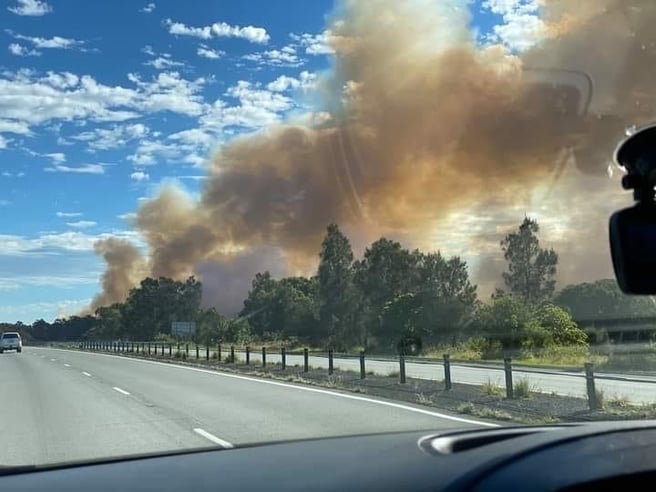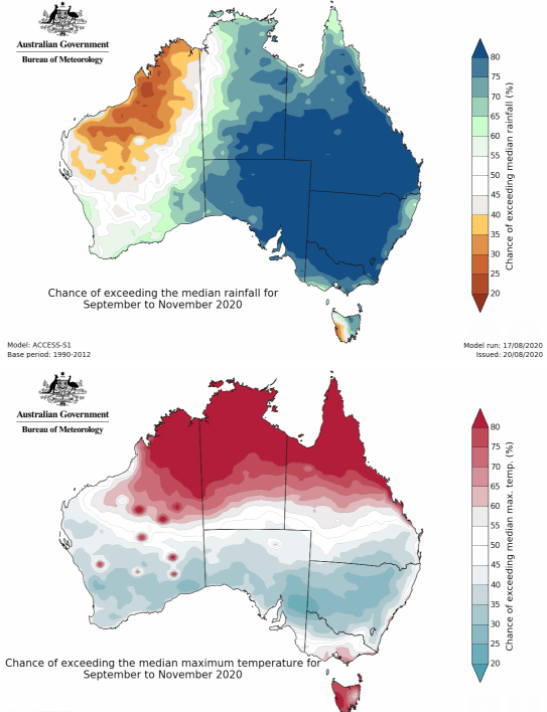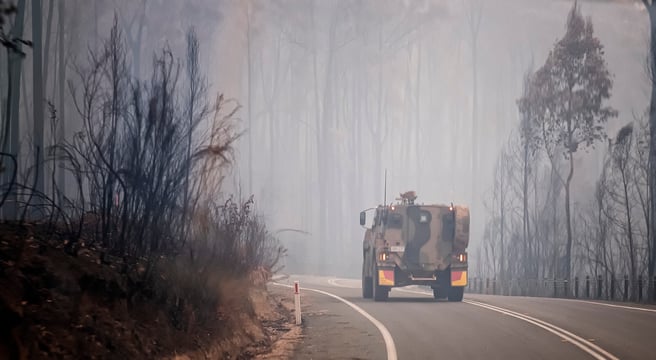_1597970628922.jpg)
On the NSW/Queensland border right now, a bushfire that has already roared through 294 hectares of land is sending plumes of smoke across the Tweed Valley.
Of course, the events of last summer seem like a lifetime away, given we've faced a global health pandemic in the months since.
But now the fires are back. And the fire burning at Duranbah is as big as 133 football fields. Although no properties are under threat, it is burning close to a major highway. It's also a reminder of the devastating summer of 2019/20.
WATCH: It's time to start thinking about making a bushfire survival plan. Post continues after video.
Last season's bushfires were described as "apocalyptic" and like "an atomic bomb" as they burnt through every state and territory in our country from August 2019 to March 2020.
They were one of the worst we've ever experienced in our history, killing 34 people, destroying 18.6 million hectares of land, and engulfing 6,000 buildings. Nearly three billion animals were killed or displaced.
Our Christmas and New Year's celebrations were covered in smoke and we all waited with bated breath each morning for updates on the ongoing tragedy.



